Hey There!
I'm Reina
I am a full-time traveling registered nurse, fitness enthusiast, and nutrition expert. Every morning I wake up intending to bring awareness of the importance of health and spiritual wellness, especially to the traveling community. At Messy Bun Traveler, we promote travel that allows the traveler to either kick-start, maintain, or enhance a healthy lifestyle. So whether you're someone who travels for business, travels for pleasure, or new to travel and looking for health advice while on the road, this blog is for you!
inspiration
Categories:
health
destinations
fitness
resources
wellness
Privacy & Disclosure
The Messy Bun Traveler is designed to bring you fun stories, destination guides, and healthy travel advice. To help cover the cost of running this site, all posts are sprinkled with hand-selected affiliate links. When you click on one of these links and make a purchase, I will earn a small commission at no additional cost to you. I only accept affiliate links and paid advertisements from brands I believe in, trust and use personally. Thank you for your continued support!
Top Things to do in Egypt (Other Than the Pyramids)
March 27, 2024
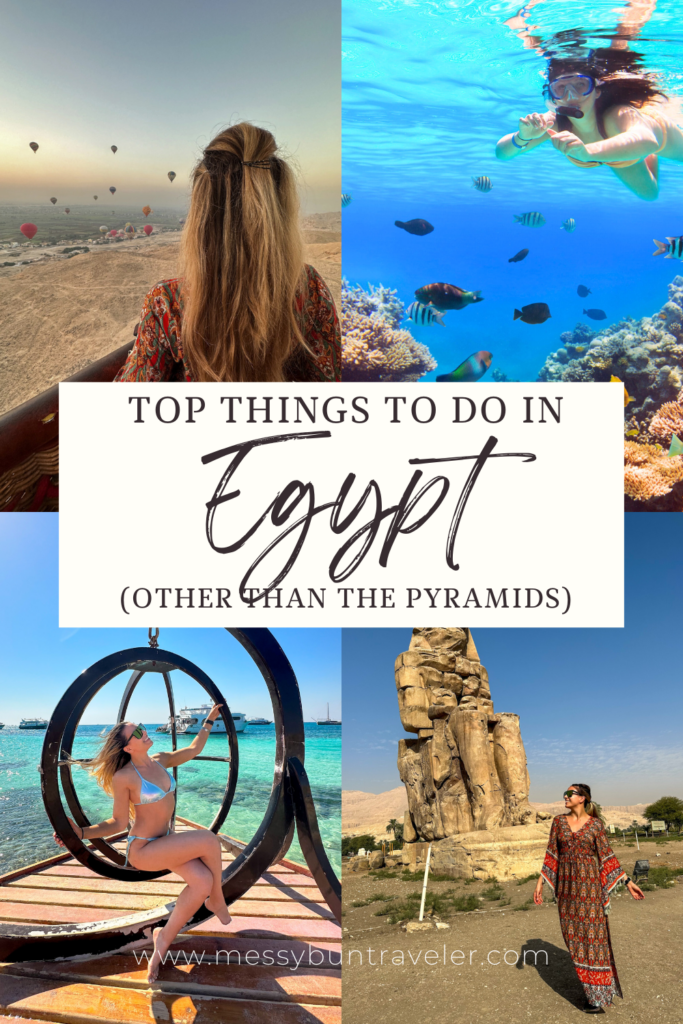
When we think of Egypt, the grandeur of the pyramids immediately springs to mind. After all, these colossal structures are synonymous with the country, its rich history, and the mysteries that still shroud the ancient Egyptian civilization.
However, limiting Egypt’s allure to the pyramids alone would be a disservice to everything else the country offers.
I will admit that the main reason I decided to travel to Egypt was to see the pyramids. But after having been there, I discovered that this country has soooooo much more to offer, which became the highlights of my 10-day trip.
See also:
In this post, I’m stepping out of the towering shadows of the Giza Pyramids to illuminate the myriad of adventures, sights, and cultural delights that Egypt holds. From majestic temples to crystal clear waters, here is a list of things to do in Egypt other than the pyramids.
Summary
1. Egyptian Museum of Antiquity
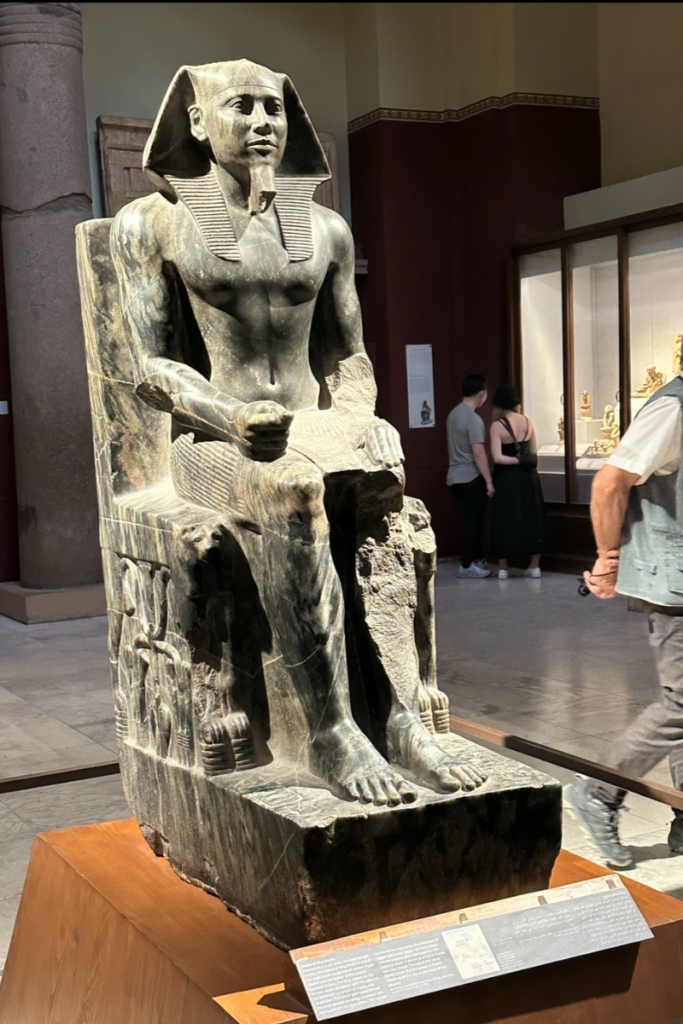
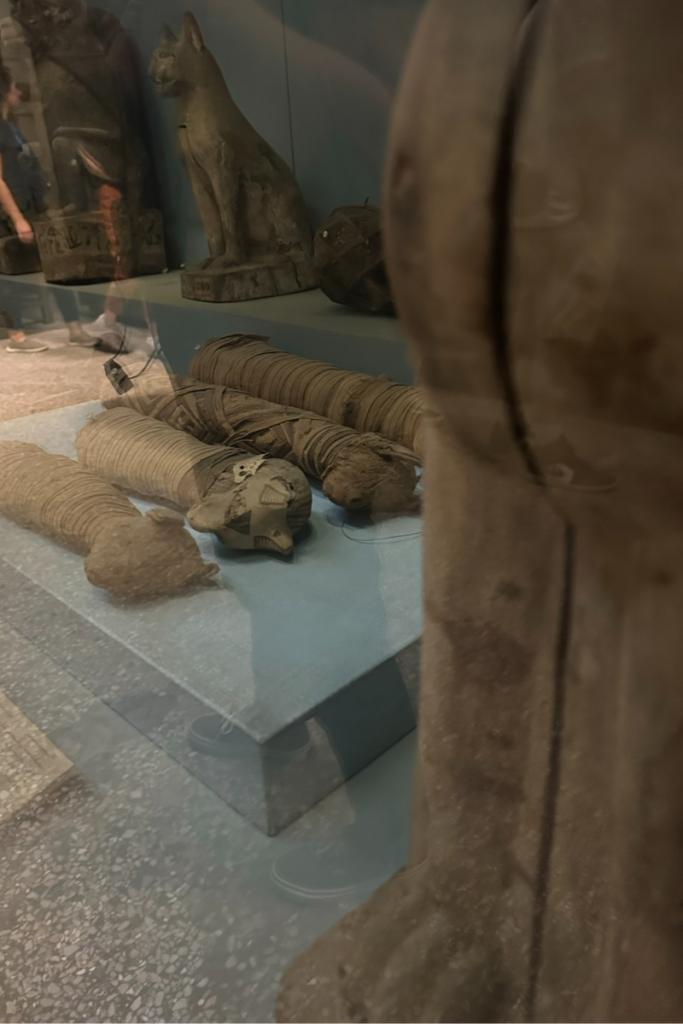
The Egyptian Museum in Cairo is home to the most extensive collection of ancient Egyptian artifacts worldwide. The museum’s vast collection spans over 5,000 years of history, offering a glimpse into ancient peoples’ art, lifestyle, and religious beliefs.
Most people spend about half a day here, but that’s not nearly enough time to see everything.
If you’re big into museums and history, I recommend two half-days (one full day will be tiring and overwhelming) and hiring a guide, which I found super helpful.
2. Coptic Cairo
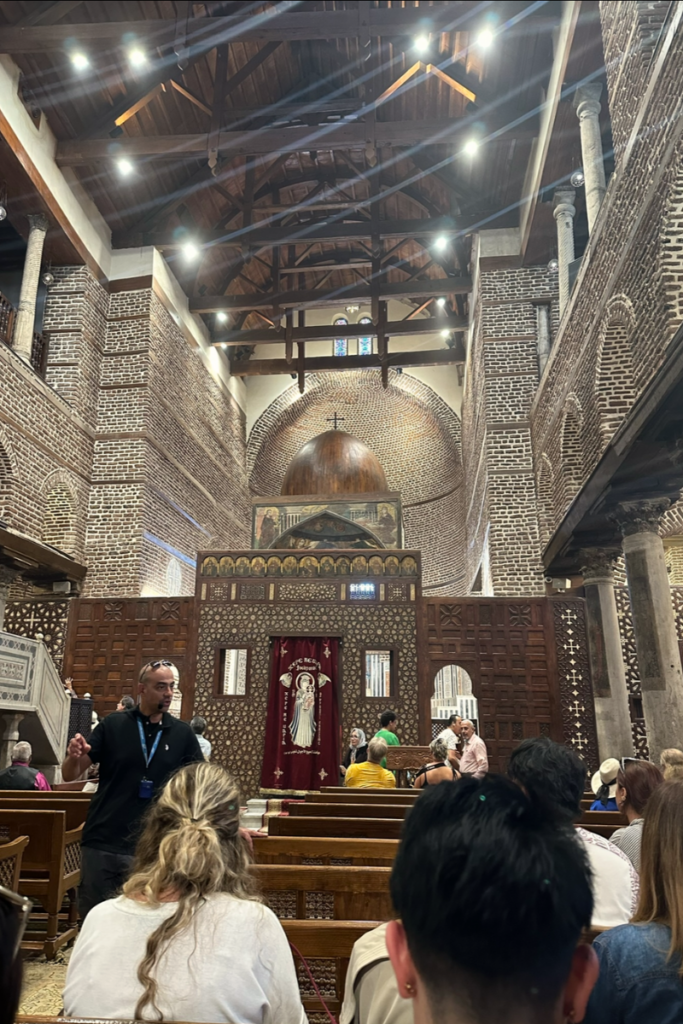
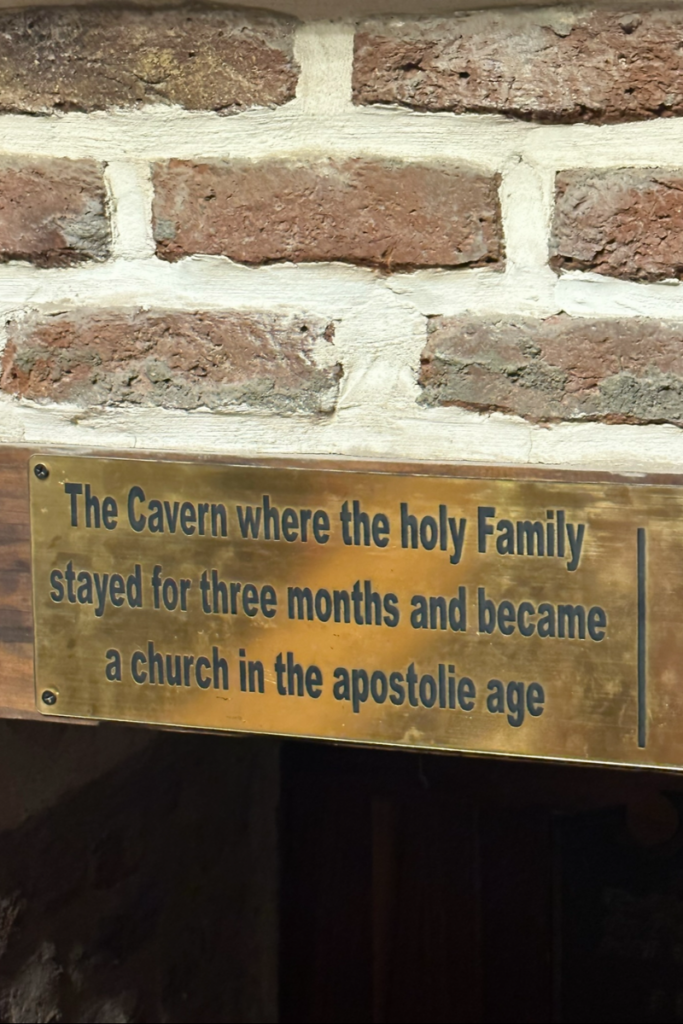
In the heart of old Cairo, Coptic Cairo stands as a living testament to Egypt’s Christian heritage. The complex is abounding with churches dating back to early Christian times, and the Ben Ezra Synagogue was built on the site where, legend has it, the baby Moses was found.
You can spend the day strolling through its narrow alleyways, visiting the Hanging Church and the Church of Saint Sergius, and visiting the cave within Abu Serga, where the Holy Family took refuge for three months while escaping persecution from King Herod of Judea.
3. Khan el-Khalili Market
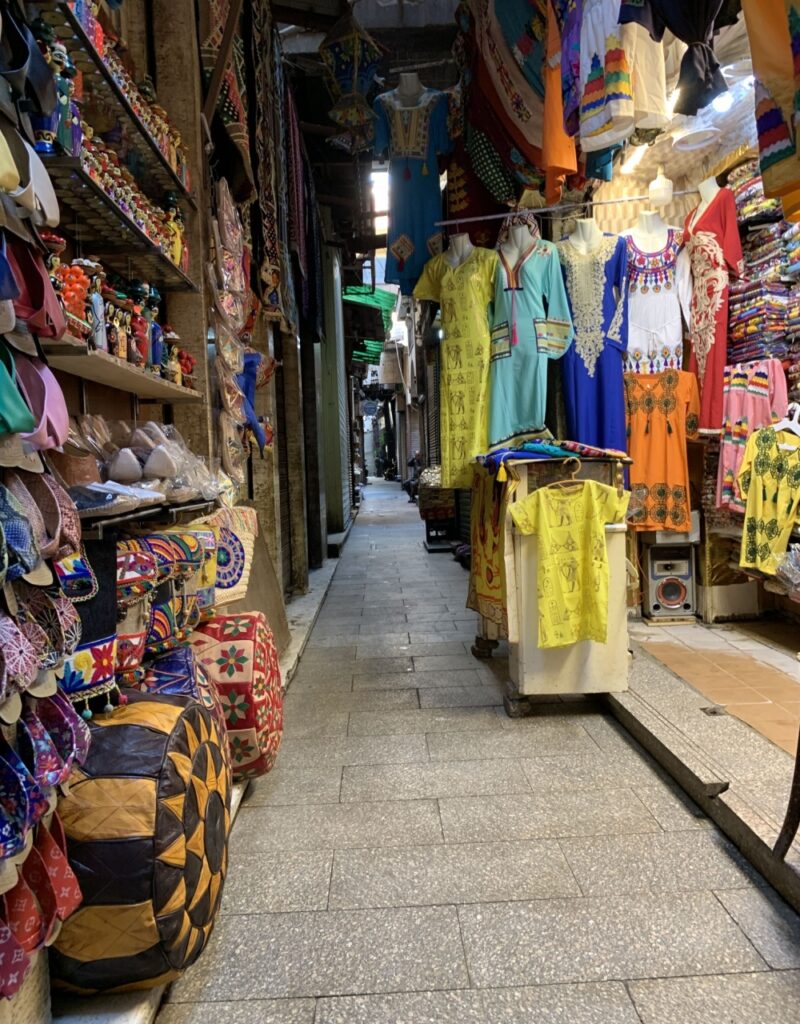
No trip to Egypt is complete without a visit to the bustling markets of Cairo.
One of the most famous is Khan el-Khalili, a labyrinthine marketplace with shops selling everything from colorful spices and fragrant oils to intricate handicrafts and traditional souvenirs.
As you wander through the narrow alleys, you’ll be mesmerized by this vibrant bazaar’s sights, sounds, and smells!
4. Karnak Temple Complex
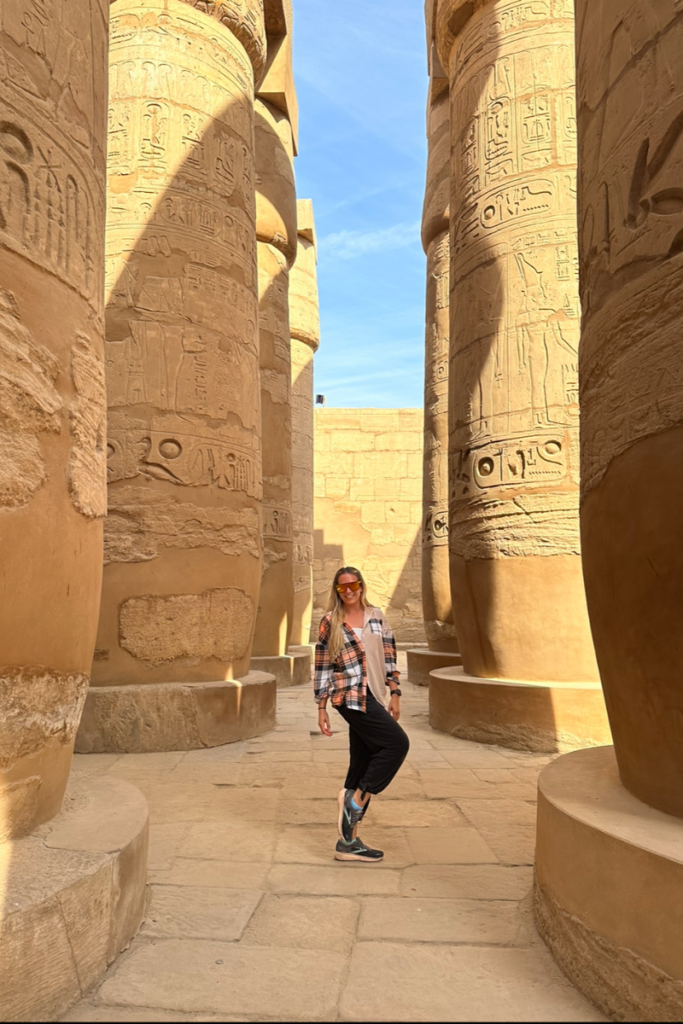
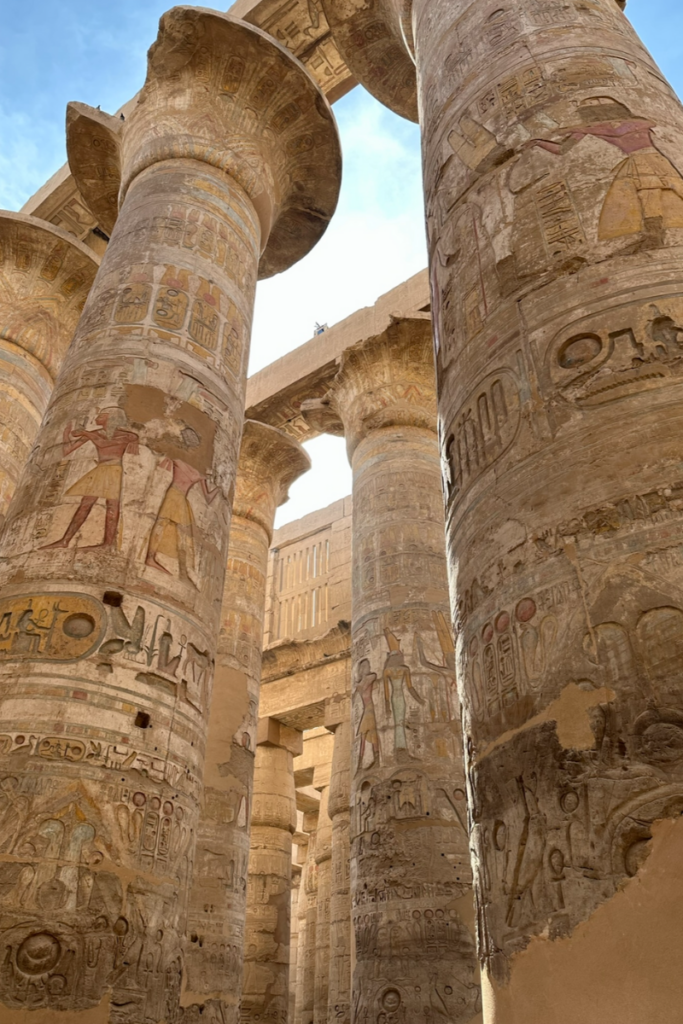
Built over 4,000 years ago and spanning an area of 200 acres, Karnak is the largest temple complex in Egypt and one of the most impressive ancient sites. The grandeur of this sacred site is unparalleled, with its towering columns, imposing statues, and intricate hieroglyphs that depict tales from Egyptian mythology.
The Karnak Temple is the largest religious building in history, with the Hypostyle Hall in the Temple being the largest religious room in any building that has ever been built. The Temple was dedicated to Amun, the chief god of ancient Thebes.
Plan on spending about 2-3 hours here.
5. Valley of the Kings

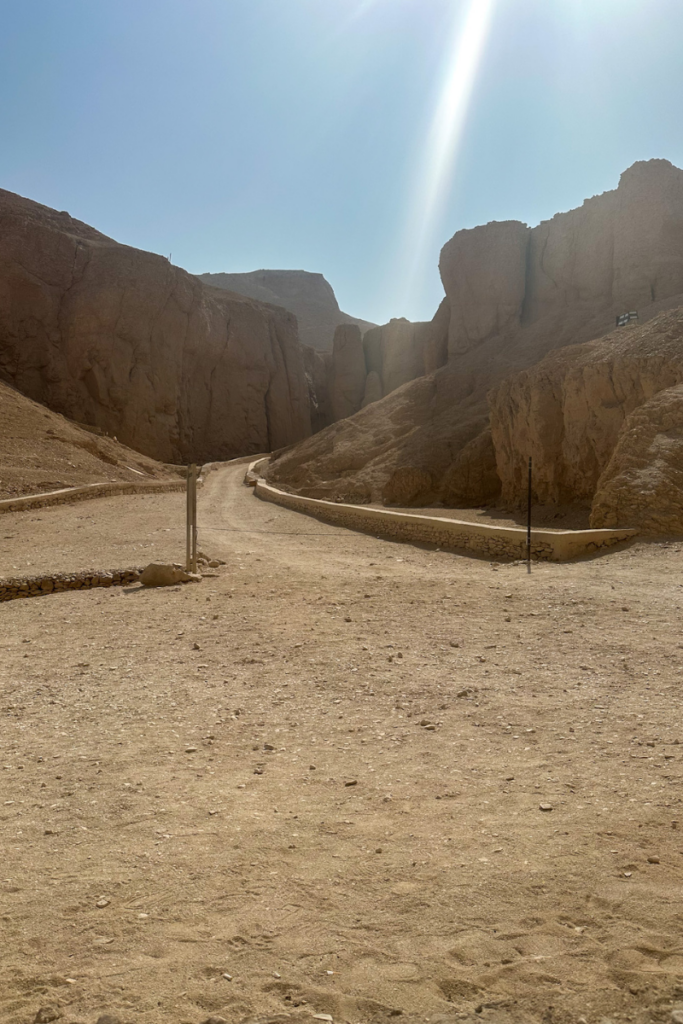
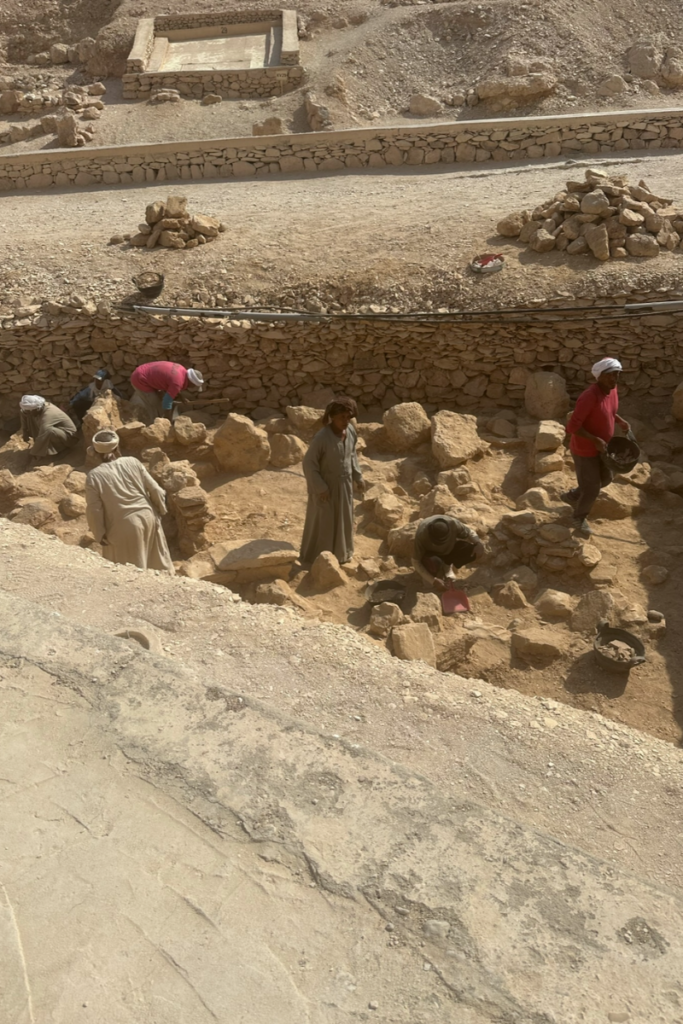
Located on the west bank of the Nile, the Valley of the Kings is an essential stop for anyone interested in ancient Egyptian history.
This vast necropolis is home to over 60 tombs, including King Tut’s, which was discovered mostly intact in 1922. A visit here offers a peek into the elaborate burial practices and beliefs of ancient Egyptians.
There is still so much in Valley of the Kings that has yet to be discovered, so you’ll run into archeologists and scientists still excavating the area.
6. Pharaoh Hatshepsut’s Temple at Deir el-Bahri
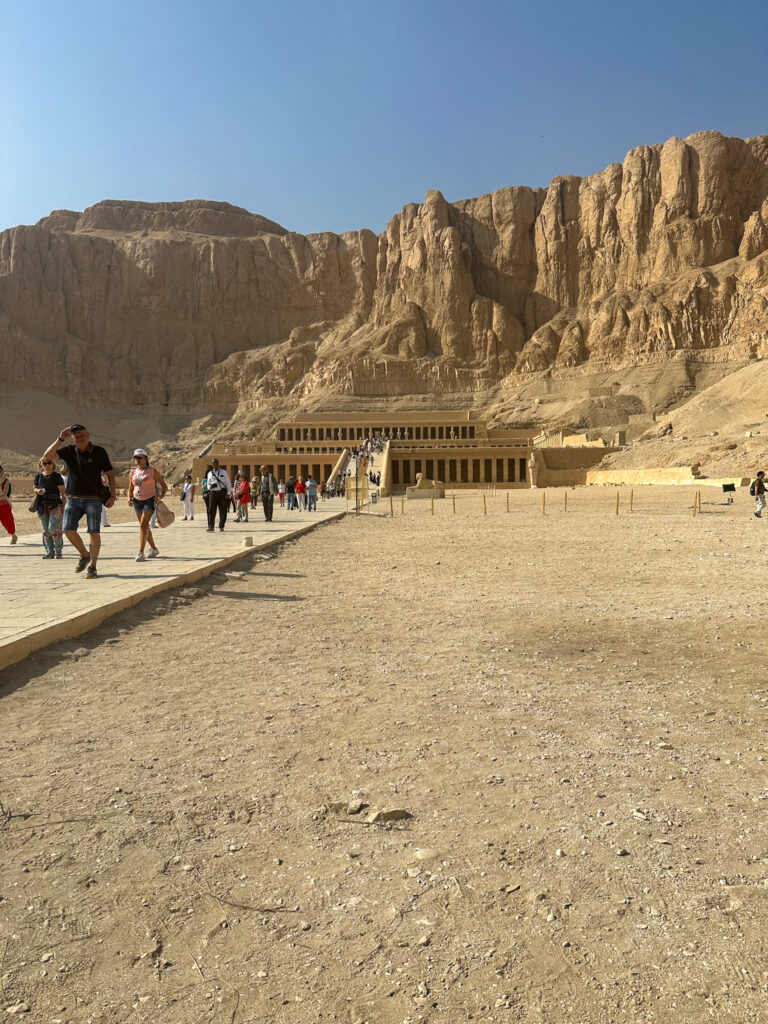
In the West Bank of Luxor, the Temple of Hatshepsut is a testament to one of ancient Egypt’s most powerful and influential female rulers. This magnificent temple complex was built for Queen Hatshepsut, who declared herself pharaoh and ruled alongside her stepson Thutmose III.
The Temple’s unique design features terraced levels leading to grand colonnades and sanctuaries adorned with detailed relief carvings that depict Hatshepsut’s achievements and divine birth.
Plan on spending about 1-2 hours here.
7. Take a Hot Air Balloon Ride Over Luxor
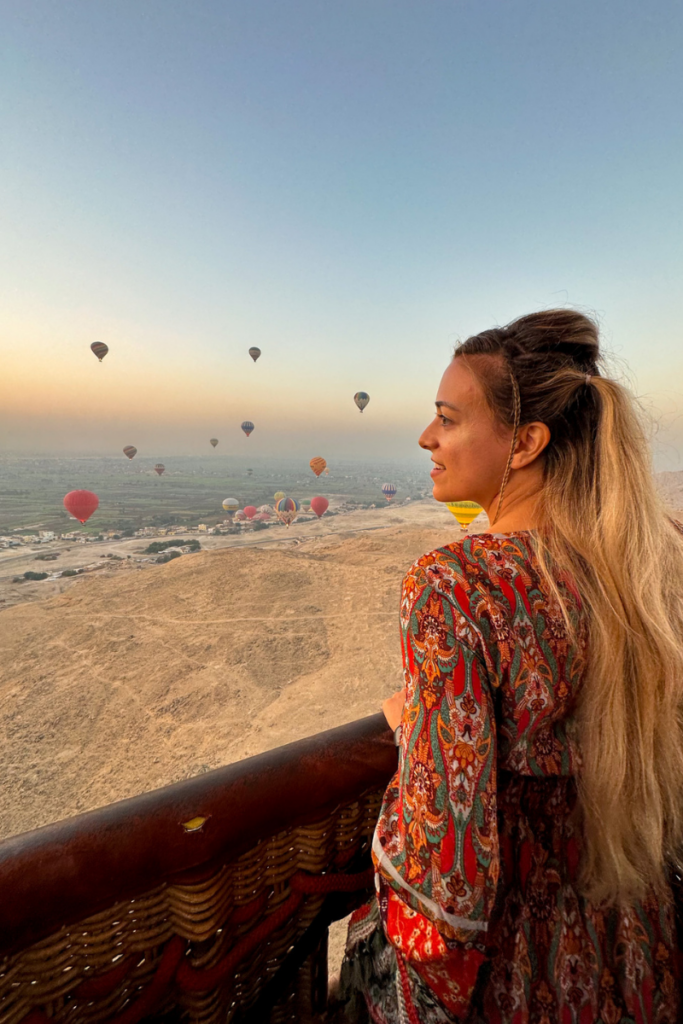
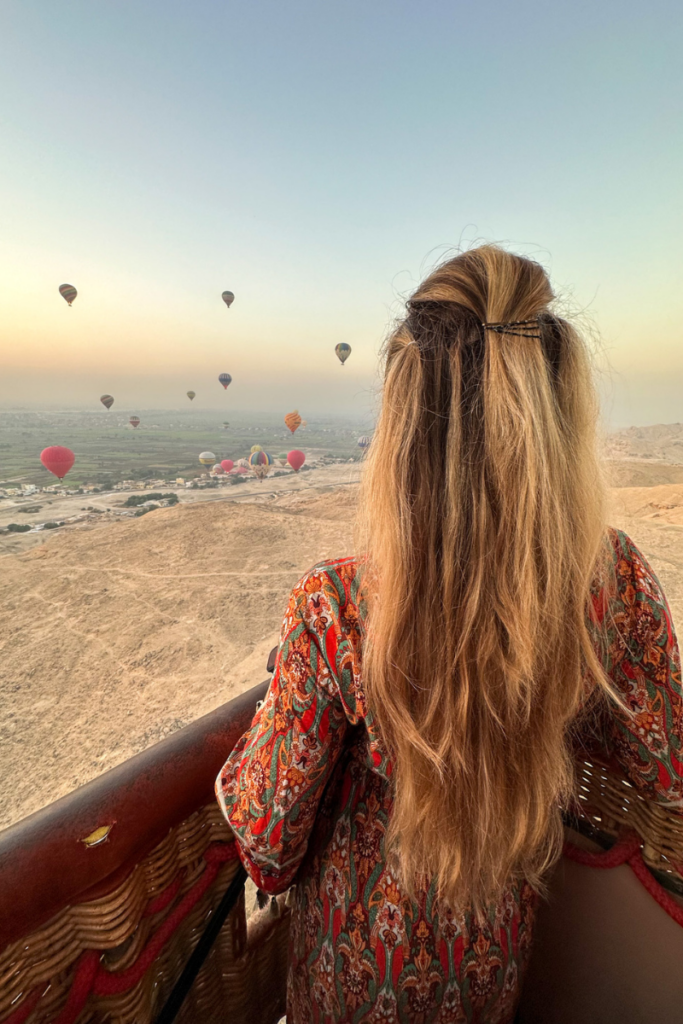
For a truly unforgettable experience, ride to the skies with a hot air balloon over Luxor right as the sun rises. As you soar high above the city, you’ll be treated to breathtaking views of the temples, the Nile River, and the surrounding desert landscape. In my opinion, this is one of the top things to do in Egypt!
see also:
8. Cruise the Nile River

A cruise on the longest river in the world, Nile River, is a must-do for any traveler in Egypt. The river spans over 4,000 miles across lush greenery, towering temples, and traditional villages. You can choose to take a multi-day cruise of the Nile or decide to take a sunset cruise in a traditional felucca.
see also:
9. Temple of Hathor at Dendera
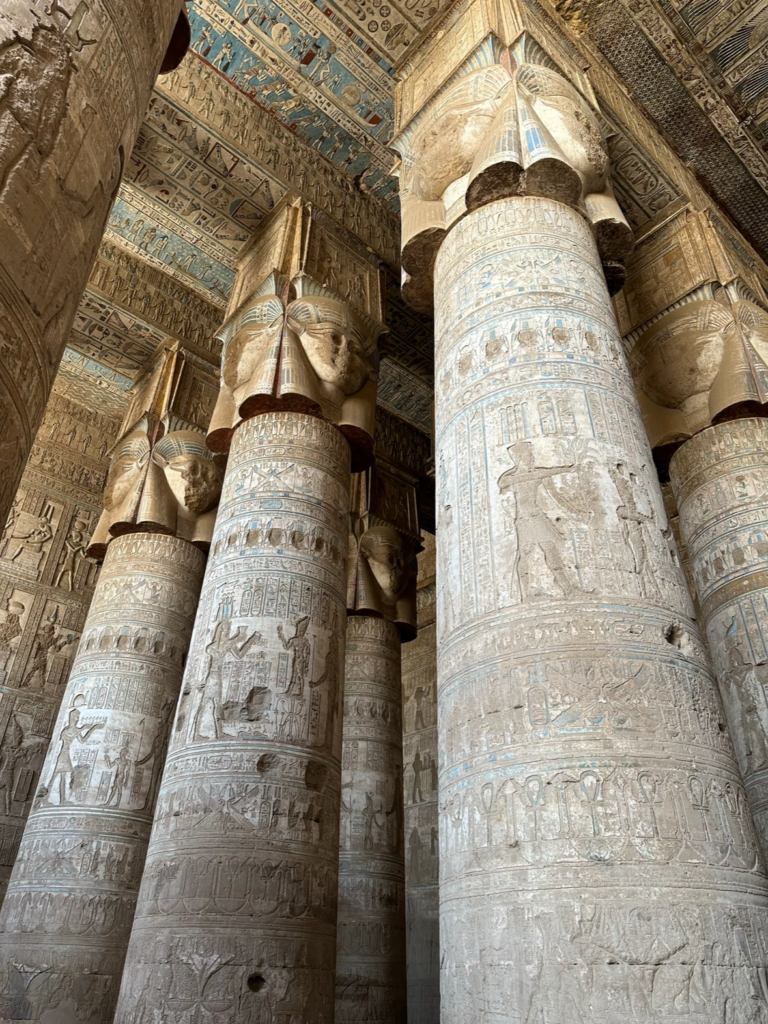
Stepping into the Temple of Hathor at Dendera feels like entering another realm. Hathor, the goddess of music and love, is revered here amidst striking depictions of ancient Egyptian deities on intricately carved ceilings and columns.
The ceiling of the Temple tells the story of the Pleiades, also known as the Seven Sisters, an open star cluster in the constellation of Taurus.
In Egyptian mythology, they are represented as cows, but what is so interesting about this story is that similar stories can be found in many other ancient civilizations.
Historians believe that the story of the Pleiades is the world’s oldest story, one told by our ancestors nearly 100,000 years ago.
One of the best-preserved complexes of its kind, the Temple invites contemplation and wonder. Plan on spending at least half a day here.
10. Snorkel the Red Sea
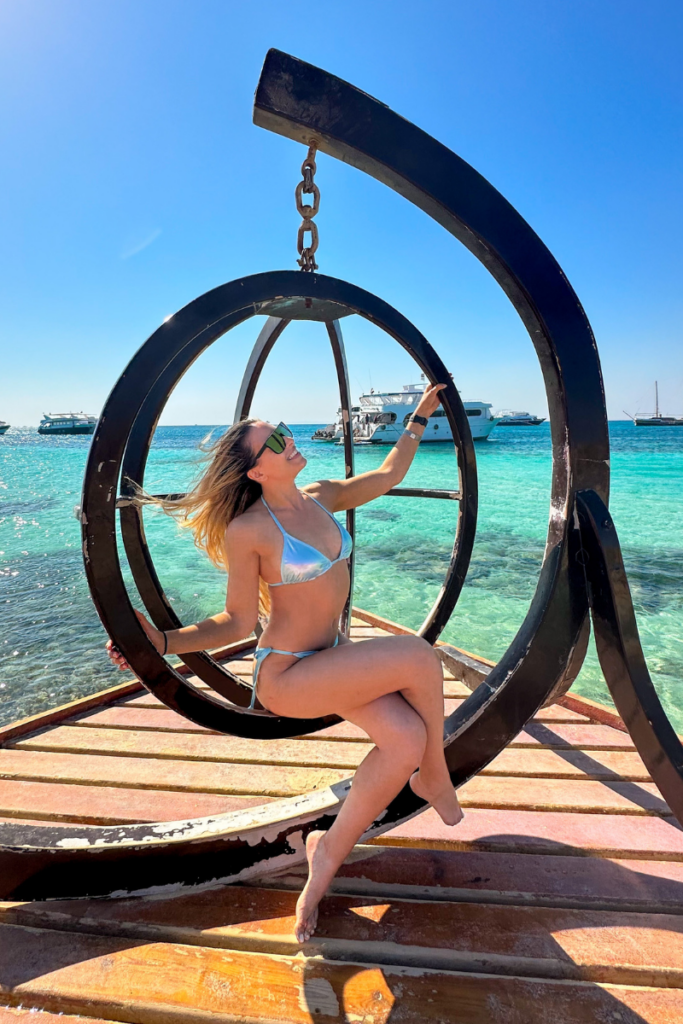
With shimmering azure waters and a kaleidoscope of marine life, the Red Sea is a paradise for snorkelers and divers. Sharm El Sheikh, Dahab, and Hurghada beckon sun-seekers with pristine beaches and the opportunity to explore underwater landscapes teeming with biodiversity.
The Red Sea’s coral reefs offer a chance to encounter rainbow-colored fish and vibrant corals and be part of an ecosystem that has bewitched explorers for centuries.
see also:
30 Countries Before 30! Here’s Some Memories & Life Lessons From the Journey.
11. Mount Sinai and the Saint Catherine’s Monastery

Mount Sinai, known as Jebel Musa in Arabic, is where, according to tradition, God handed down the Ten Commandments to Moses. A climb to the summit in the still of night to witness the sunrise is a spiritual and contemplative experience not easily forgotten.
Nearby, Saint Catherine’s Monastery, nestled at the foot of the mountain, has been a pilgrimage site and continuous worship since the 4th century. It is the oldest continually functioning monastery in the world. Its fortified walls protect a haven of religious relics, scripture, and the iconic burning bush.
12. Indulge in Middle Eastern Food
Travel isn’t just about the places you see but also the food you eat. Egyptian cuisine is a flavorful blend of Mediterranean, Middle Eastern, and African influences.
Some popular dishes include koshari (a mixture of rice, lentils, and macaroni), ful medames (stewed fava beans), and taameya (Egyptian falafel) to name a few.
Whether you’re a history buff, an adventure seeker, or simply seeking a truly unique travel experience, Egypt is bursting with possibilities.

Reina Conboy
I am a full-time traveling registered nurse, fitness enthusiast, and plant-based nutrition expert. Every morning I wake up intending to bring awareness of the importance of health and spiritual wellness, especially to the traveling community. This blog is designed to bring you travel and health advice while sprinkling in some fun life stories.
Join my newsletter
* We will never share your details with any third party